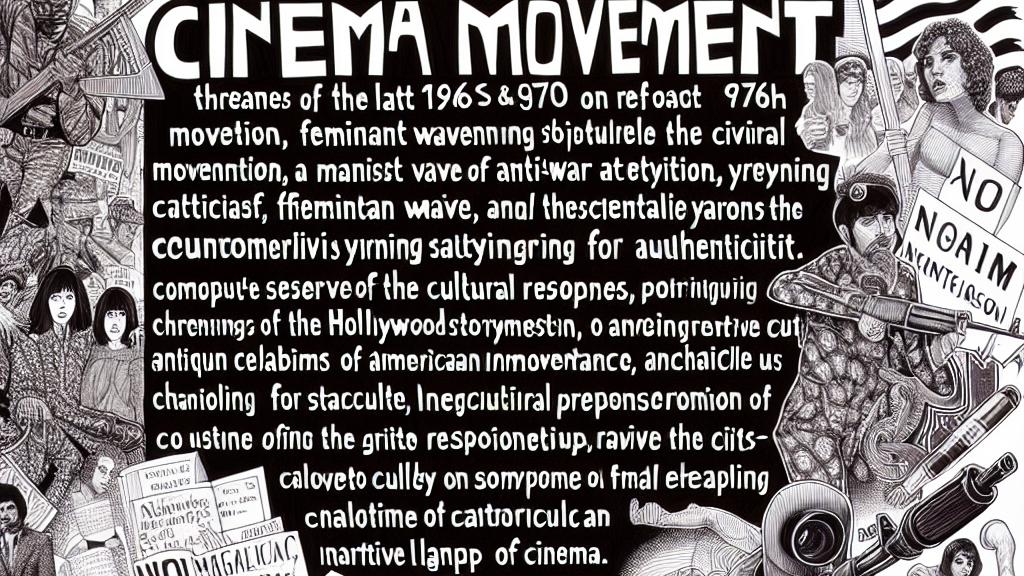Busting Myth: The Real Story Behind American New Cinema!
Overview
- Comprehensively clarifies misconceptions surrounding American New Cinema.
- Explores seminal films, their social impact, and the visionary filmmakers behind them.
- Thoroughly analyzes the cultural and historical significance of the movement within the broader context of American cinema.

Introduction to American New Cinema
The American New Cinema emerged in the late 1960s and 70s, catalyzed by profound societal changes and driven by a cohort of young, innovative filmmakers eager to challenge the status quo of traditional Hollywood storytelling. This movement arose during a tumultuous time in the United States, characterized by the civil rights movement, feminist waves, anti-war activism, and a dynamic counterculture that yearned for authenticity. Freed from the constraints of the Hays Code, filmmakers began to tackle themes previously deemed taboo, embracing grittier explorations of violence, sexuality, and existential inquiries. Important films during this period broke new ground, allowing for diverse narratives that reflected the complexities of American life. New Cinema served not only as a reaction to artistic constraints but also as a mirror reflecting the shifting ideals and struggles of a society grappling with its identity. Understanding this movement requires appreciating it as a significant cultural response that reshaped the narrative landscape of cinema.
Myths and Misconceptions
A widespread misconception regarding American New Cinema is the belief that its primary characteristics are explicit violence and overt sexual content. While films like 'Easy Rider' and 'The Graduate' feature these aspects, they are, at their core, rich commentaries on the disillusionment of American society, personal struggle, and the quest for authenticity. To illustrate, 'Midnight Cowboy' poignantly explores loneliness and the societal rejection faced by its protagonists, while 'One Flew Over the Cuckoo's Nest' serves as a powerful critique of the mental health system and societal norms around conformity and individuality. These films go beyond shock value; they utilize provocative content as a means to engage with broader themes of freedom, alienation, and humanity's search for meaning. By reducing New Cinema to mere sensationalism, we undermine the complexities and layers of storytelling that define the movement. It is crucial to engage deeply with these films to appreciate their narrative richness and social relevance.
Impact and Legacy
The reverberations of American New Cinema have indelibly shaped the landscape of filmmaking, paving the way for a wave of independent cinema that values creativity and originality. This movement inspired a generation of filmmakers who embraced the idea of the auteur—individuals who craft unique narratives with a strong personal vision. Iconic films like 'The Godfather' and 'Taxi Driver' exemplify this evolution, intertwining rich storytelling with complex character studies that grapple with morality and societal decay. The aesthetics pioneered during this period—gritty realism, authentic dialogue, and innovative cinematography—have become foundational elements in contemporary filmmaking. The legacy of New Cinema continues to resonate; directors like Quentin Tarantino and the Coen Brothers cite its influence in their works. By encouraging filmmakers to delve into the human experience, American New Cinema not only transformed cinema but also established a lasting framework for exploring profound societal questions, ensuring its relevance in today’s film discourse. Thus, the movement is not merely a historical footnote but a living testament to the power of storytelling as a vehicle for social critique.

Loading...